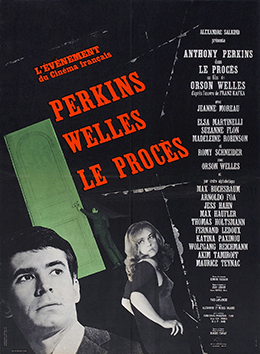A blog formerly known as Bookishness / By Charles Matthews
"Dazzled by so many and such marvelous inventions, the people of Macondo ... became indignant over the living images that the prosperous merchant Bruno Crespi projected in the theater with the lion-head ticket windows, for a character who had died and was buried in one film and for whose misfortune tears had been shed would reappear alive and transformed into an Arab in the next one. The audience, who had paid two cents apiece to share the difficulties of the actors, would not tolerate that outlandish fraud and they broke up the seats. The mayor, at the urging of Bruno Crespi, explained in a proclamation that the cinema was a machine of illusions that did not merit the emotional outbursts of the audience. With that discouraging explanation many ... decided not to return to the movies, considering that they already had too many troubles of their own to weep over the acted-out misfortunes of imaginary beings."--Gabriel García Márquez, One Hundred Years of Solitude
Search This Blog
Friday, April 22, 2016
The Trial (Orson Welles, 1962)
There may be sensibilities more different from each other than those of an exiled Midwestern bon vivant and a consumptive Middle European Jew, but they rarely come together in a work of art the way they did in Orson Welles's version of Franz Kafka's The Trial. It was made in that fertile middle period of Welles's career that also saw the creation of Touch of Evil (1958) and Chimes at Midnight (1965), and it holds its own against those two landmarks in the Welles oeuvre. In the end, of course, the Wellesian sensibility dominates, the American tendency to affirmation overcoming (barely) Kafka's pessimism: Welles's Josef K. (Anthony Perkins) is rather more assertive than Kafka's protagonist. He doesn't succumb "Like a dog!" to his assailants but defies them. That said, Perkins, now carrying the indelible stamp of Norman Bates into all his roles, is superlative casting: We can believe that he's guilty -- even if we never find out what his supposed crime is -- while at the same time we sympathize with his plight. The real triumph of the film is in finding the settings in which to stage K.'s ordeal, ranging from K.'s stark, low-ceilinged apartment to bleak modern high-rise apartment and office buildings, to ornate beaux arts exteriors, to the labyrinthine courts of the law. The film was shot in the former Yugoslavia, in Italy, and in the abandoned Gare d'Orsay in Paris. Welles chose a novice, Edmond Richard, who had never shot a feature film, as his cinematographer. Richard went on to shoot Chimes at Midnight, too, as well as some of Luis Buñuel's best films, including The Discreet Charm of the Bourgeoisie (1972). The cast includes Jeanne Moreau, Romy Schneider, Elsa Martinelli, and Akim Tamiroff, with Welles himself playing the role of Hastler, K.'s attorney, after failing to persuade Jackie Gleason or Charles Laughton to take the part. The Trial is probably longer and slower than it needs to be, and there is some inconsistency of style: The scenes involving Hastler, his mistress (Schneider), and K. are shot with more extreme closeups than the rest of the film, where the sets tend to overwhelm the human figures. And the ending, with its explosion followed by a rather wispy mushroom cloud, is a little too obviously an attempt to bring a story written during World War I into the atomic era. Some think it's a masterpiece, but I would just rank it as essential Welles -- which may or may not be the same thing.
